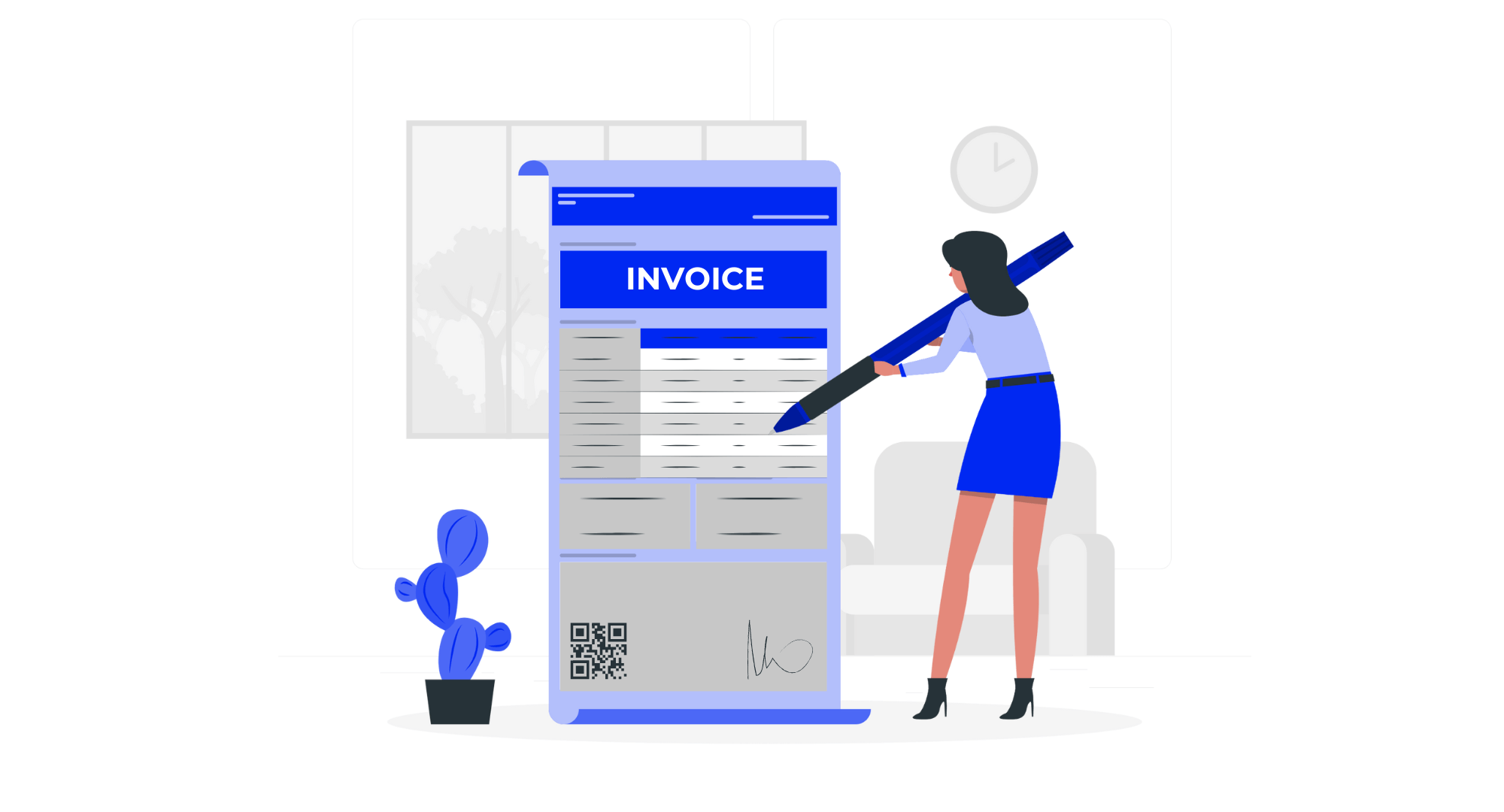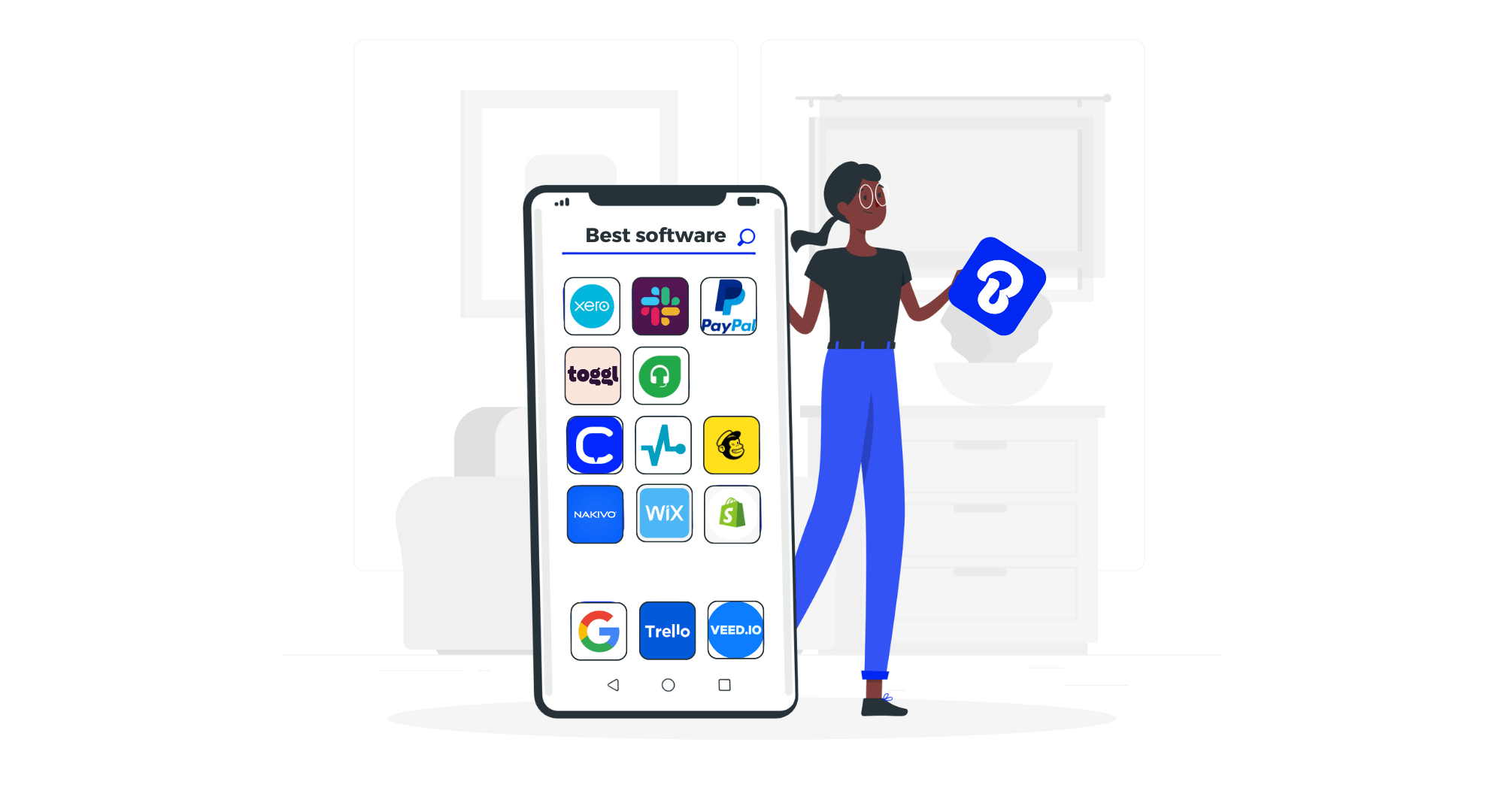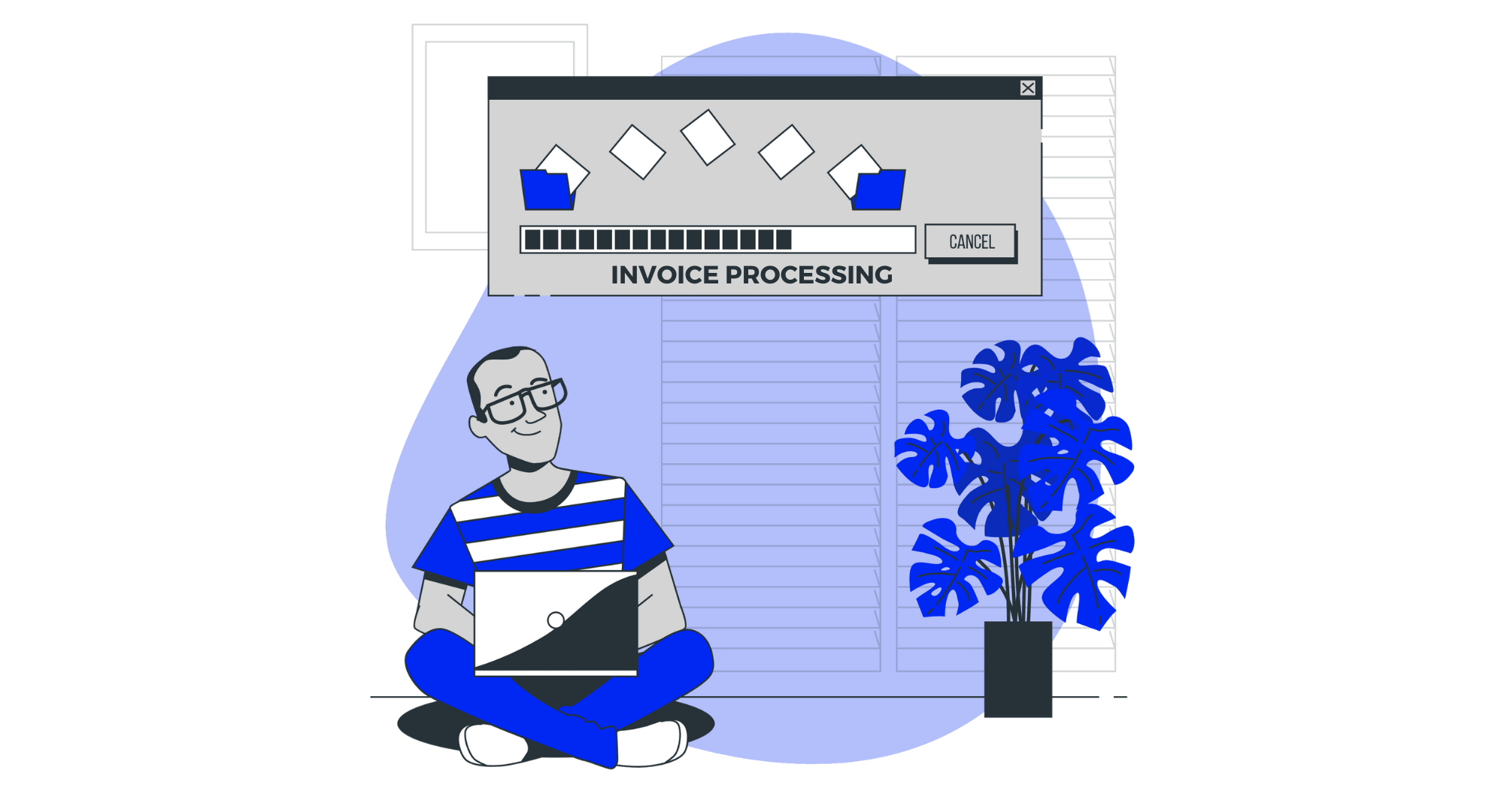10 Parts of an Invoice
In this part we’ll show you what should not be forgotten on every valid invoice.
- A Standout Header
- Invoice Number or a Unique Identifier
- Your Company’s Details
- Client’s Details
- Due Date on the Invoice
- Goods or Services Sold
- Fees or Taxes as an Invoice Component
- Total Amount Due
- Payment Methods
- The Terms of the Transaction

1. A Standout Header
Not everyone thinks the same way as everyone else, so don’t think that adding a distinct header to company documents is common sense. Label the invoice in clear text somewhere at the top, naming exactly what the document is.
This will save you a big headache and the confusion over what all these random papers flying around your office are. Include a logo in your header and make it look as professional and presentable as possible.
2. Invoice Number or a Unique Identifier
Every invoice should come with its own invoice number (or some other unique identifier) to separate it from the rest in the stack. It could be a filing code, a unique chronological number, or some kind of data-based purchase order number.
If you’re sending the invoice requesting payment, then you should make sure the organization doesn’t require any unique company details. This could be purchase order numbers or maybe specific billing codes.
A unique identifier makes all the difference in the world, especially when it comes to receiving timely compensation.
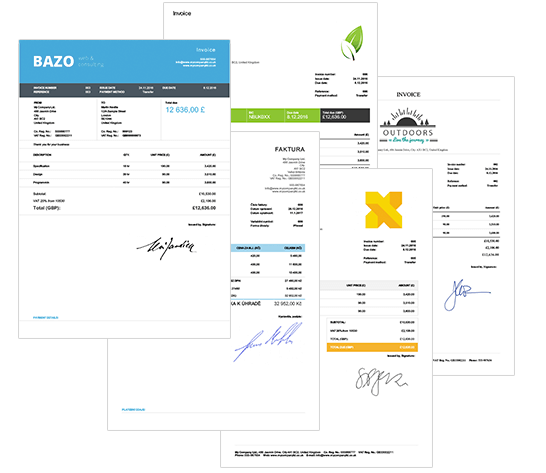
3. Your Company’s Details
What is an invoice if the recipient doesn’t know who it’s from? It’s important that you include all distinguishing information about the payee at the end of the document. This information should include:
- Company name
- Payee legal name, if different than company name
- Company address (including the address where payments may be mailed if different from company address)
- Phone number
- Fax number (if applicable)
- Email address
- Tax Identification Number – TIN (if applicable)
This helps to differentiate who is paying and who is receiving payment (on top of keeping things really simple and clear). The format of such information isn’t important, as long as it is clear and concise.
If there are any issues along the way, any customers with an invoice can call a company number or send over information if needed. Make sure all your information is printed accurately and is in a place that is easily seen.
4. Client’s Details
The client details section of an invoice is crucial as it specifies who is being billed for the goods or services provided. It establishes the recipient for legal and accounting purposes and is essential for payment processing and customer relationship management.
The “payer” is the individual or company responsible for paying the invoice. Similar to the key company information, the payer information section should include the following:
- Payer name
- Payer company name
- Payer address (this is generally where the invoice will be mailed if sending a hard copy)
- Phone number
- Fax number
- Email address
Accuracy of this information is key. Misspellings of client/customer data do not give a good impression!
5. Due Date on the Invoice
One of the most important pieces of information you can include is the actual date of the transaction. This will help to simplify the process of cataloging when products were sold or services were rendered.
It also helps out if there is ever confusion over when something was sold. Say there was an issue with the shipping of a product: without the actual date of the transaction, how will anyone figure out where the post office went wrong?
The due date should absolutely appear on the invoice and might be the most important item on this list (along with the product description and total amount). The due date will help keep the process and invoice history organized.
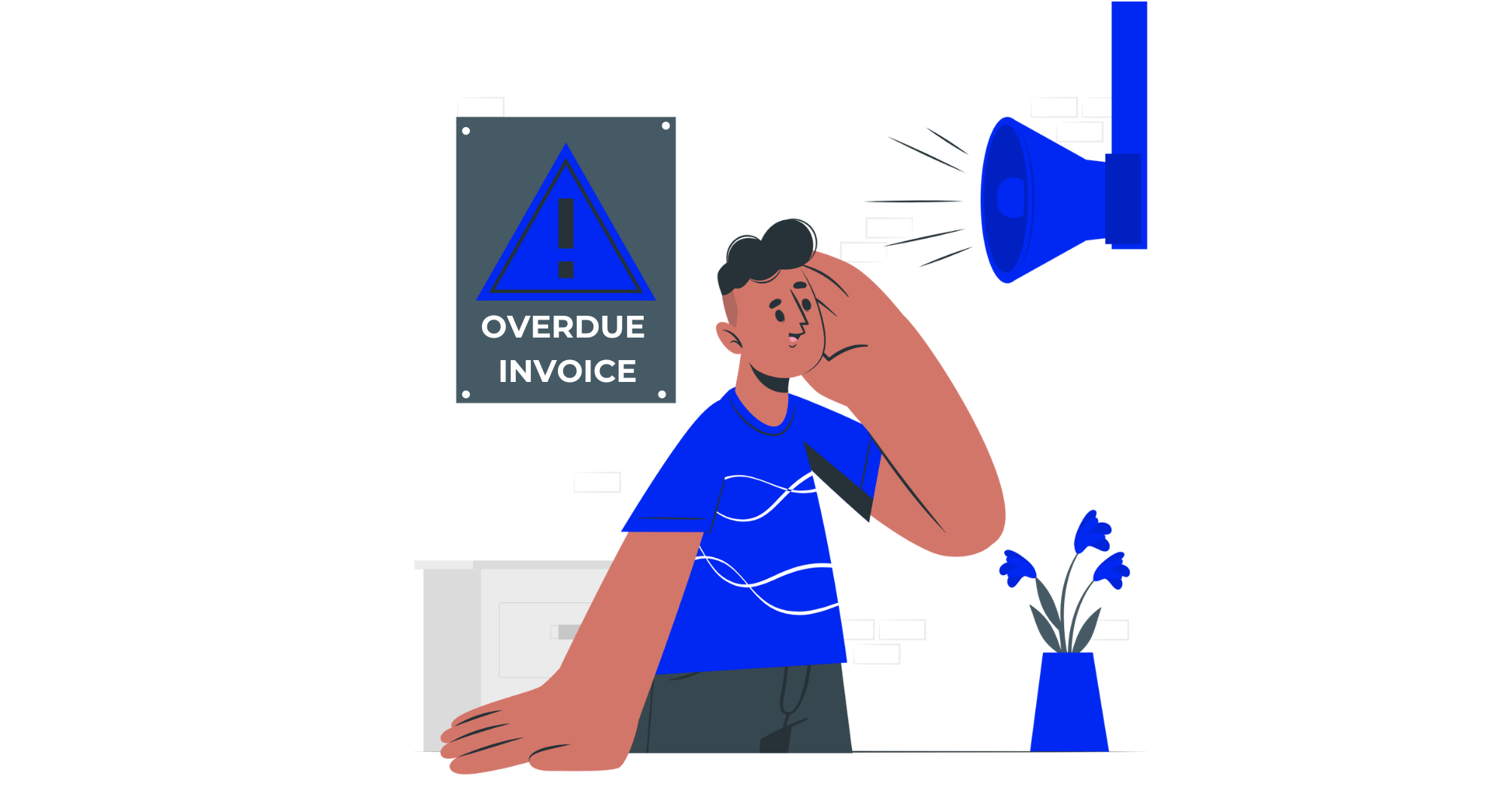
6. Goods or Services Sold
This seems to many like the “meat” of the invoice. It doesn’t have to be presented in any particular way but should be fairly easy to read and understand. You’ll probably want to include things like:
- The item name or title of service that was provided
- The price of the item or service
- The amount or quantity of product or service sold
There are bound to be other details about the product you might want to include. Keep them here in your “sold” section to keep things from getting confusing.
If your business sells goods (products), use this section to detail this information. Provide relevant data such as product ID, product name and description, quantity sold, and per-unit price. If you decide for Billdu invoicing app, you can quickly add items to your invoice by scanning their barcode.
If your business provides services, use this section to detail this information. Provide relevant data such as the date the service was provided (and by whom,) the number of hours of service provided, and the hourly rate (unless it was billed as a lump sum.)
Keep in mind that often, internal auditors review invoices for unclear detail in this section, as it can often be a red flag for fraudulent invoicing. For this reason, it’s imperative that you provide as much information in this section as reasonably possible.
For example, short descriptions such as “consulting services” are not recommended. A better alternative would be “March 23, 2017 – John Smith consulting services (procurement report analytics) – 4 hours, $150 per hour – see rates in contract addendum FY15a.”
7. Fees or Taxes as an Invoice Component
Going along with the products and services sold, you’ll probably want to include the price of any taxes or fees associated with the item. You might need to apply the rates or taxes in a different budget or record on the filing end.
The biggest takeaway here is to include any extra taxes or fees very near the price of the product or service. That way you can tack it all together in the “total amount due” field.
8. Total Amount Due
This one’s probably the most obvious on the list. Yes, you need to include the total amount due in the transaction on your invoice. Not only will this settle the amount, it also serves as a good reference point for you and the customer.
9. Payment Methods
Payment methods refer to the various ways by which a buyer can settle the amount due on an invoice. This section is a key element of the invoice as it outlines how the seller expects to receive payment and provides the buyer with necessary information to complete the transaction.
Typically, this part of the invoice will detail whether the seller accepts checks, credit card payments, bank transfers, online payment platforms like PayPal, or other forms of electronic payments. It may also include specific details such as the seller’s bank account information for direct deposits, a mailing address for checks, or a link to a payment portal.

10. The Terms of the Transaction
Inevitably, the transaction will include some important verbiage in the transaction terms. They do not form a compulsory part of a formal invoice, however, to make the terms more apparent, it’s a good idea to include them on the invoice so that customers can easily reflect back on them.
The terms may include penalties for paying late or not paying in full. There could be additional percentages of the bill due at certain later times. Whatever your company’s terms, try to include as much of them as you can on each invoice.
Best advice: Set yourself apart with a designated spot for personalized messages. This can be used to say “thank you” to a client or make reference to something unique to the project.
Think about when you send a gift or flowers from an online order; there’s usually a place to include a special message to your loved one. Make all your customers feel like loved ones with personalized messages right on the invoice!
What is an invoice add-on? Apart from the actual goods and/or services provided to the client, you may also have extra fees or add-ons, like taxes, service fees, included tips, etc.
Be sure to itemize these details. For example, don’t simply say, “add-ons.” Your customers likely won’t know what this means and, once again, an auditor may find issue with this vague information.


